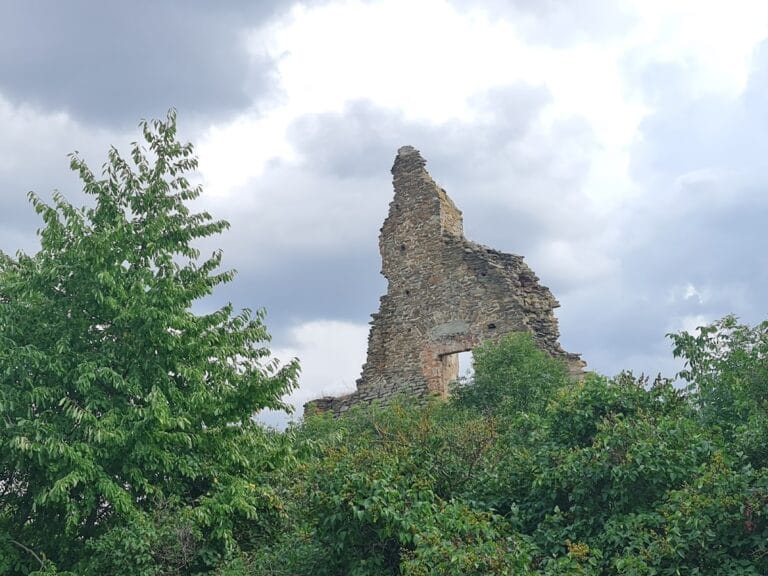Znojmo Castle: A Historic Fortress in Czechia
Visitor Information
Google Rating: 4.5
Popularity: Medium
Google Maps: View on Google Maps
Official Website: www.muzeumznojmo.cz
Country: Czechia
Civilization: Unclassified
Remains: Military
History
Znojmo Castle is located in the town of Znojmo, Czechia, and was originally established by the medieval Bohemian state under Duke Bretislav I. Built around 1080, the fortress first appeared as a wooden stronghold intended to replace an earlier castle on the opposite side of the Granice valley. Its position along the Dyje River allowed it to defend against Austrian incursions and to oversee an important trade route running northward through the Kravja Gora and the Dyje valley.
In 1140, during internal conflicts among the Přemyslid rulers of Bohemia and Moravia, the castle was besieged and destroyed. By the late 12th century, it had been reconstructed in stone, featuring substantial walls and a protective moat. This rebuilt fortress served as the residence of Moravian nobles, including Counts Conrad Otto and Henry Vladislav, consolidating its role as a regional seat of power.
The foundation of the royal town of Znojmo by King Ottokar I of Bohemia further integrated the castle into the town’s defenses, transforming it into a key fortified center with a permanent military garrison. The castle’s prominence is highlighted by its hosting of important diplomatic events, such as the 1335 marriage between Anna, daughter of King John of Luxembourg, and Duke Otto IV of Austria, indicating its significance in Bohemian and regional politics.
Throughout the Hussite Wars in the 15th century, Znojmo Castle remained loyal to King Sigismund of Luxembourg, who later became Holy Roman Emperor and passed away there in 1437. The castle was frequently visited by Sigismund and eventually came under royal ownership by the end of the century.
In the early 16th century, Queen Maria, widow of Louis Jagiellon, took residence at the castle. The fortress endured damage during Turkish military raids as well as a destructive fire in 1630. These events necessitated repairs overseen by the local authorities. After the Turkish threat receded in the late 17th century, the castle’s military importance diminished, and it fell into partial ruin.
Emperor Joseph I initiated restoration work in 1710 and restored part of the castle as a fief for the Deblin family, who proceeded to demolish the medieval palace and moat. Between 1711 and 1721, the Deblin counts commissioned the construction of a new Baroque chateau arranged around a ceremonial courtyard that overlooked the Dyje valley.
In time, sections of the original castle, including its rotunda and the so-called “robber tower,” were sold to local inhabitants and transformed into the Hostan brewery. During the 19th century, the chateau served variously as military barracks and a hospital. By the early 20th century, parts of the complex were adapted to house the city museum, with an entrance hall decorated with frescoes portraying Czech and Habsburg rulers from the 18th century.
One notable and enduring relic from the castle’s earliest period is the Romanesque rotunda dedicated to the Virgin Mary and Saint Catherine. This structure contains 11th-century frescoes depicting biblical scenes and the history of the Přemyslid dynasty, connecting the site’s origins to its medieval heritage.
Remains
Znojmo Castle originally consisted of a fortified complex centered on a stone fortress built at the end of the 12th century. This stronghold was enclosed by thick defensive walls and protected by a deep moat encircling the core structure, designed to withstand military assaults. Entry to the castle was once guarded by an octagonal tower known locally as the “robber tower” (loupežnická věž), a distinctive feature until its collapse in 1892 due to neglect.
Among the castle’s oldest surviving elements is the Romanesque rotunda, dating from the first half of the 12th century. This small, rounded chapel is dedicated to Saint Catherine and the Virgin Mary. Its interior is notable for 11th-century frescoes illustrating scenes from the Bible as well as imagery related to the ruling Přemyslid family, offering rare insight into medieval religious and dynastic art preserved to this day.
Following the demolition of the medieval palace and moat in the early 18th century, the Deblin family erected a new Baroque chateau between 1711 and 1721. This three-winged building encloses a ceremonial courtyard with vistas over the Dyje valley. The chateau’s architectural style reflects the tastes of its time while replacing much of the earlier medieval fabric.
In the 19th century, certain modifications introduced late Classical elements to the castle’s façade, particularly during periods when the complex served as a military hospital. Around 1720, the entrance hall was embellished with frescoes by Jan Michael Fisée, depicting Czech kings framed in window reveals, and Habsburg rulers in medallions beneath the dome. Symbolic female figures in the dome represent the unity and glory of the Czech lands.
The castle grounds included functional spaces such as stables, which together with the rotunda and robber tower, became part of the municipal Hostan brewery when sold to local citizens. Archaeological investigations have also uncovered ancient artifacts at the site, including a bronze object dating to the 4th millennium BCE, signaling that the location was revered as a cult place long before the castle’s construction.
Today, the Romanesque rotunda remains the only preserved structure from the original Přemyslid-era fortress still in active use, standing as a testament to the site’s deep historical roots and continuous transformation through centuries.










